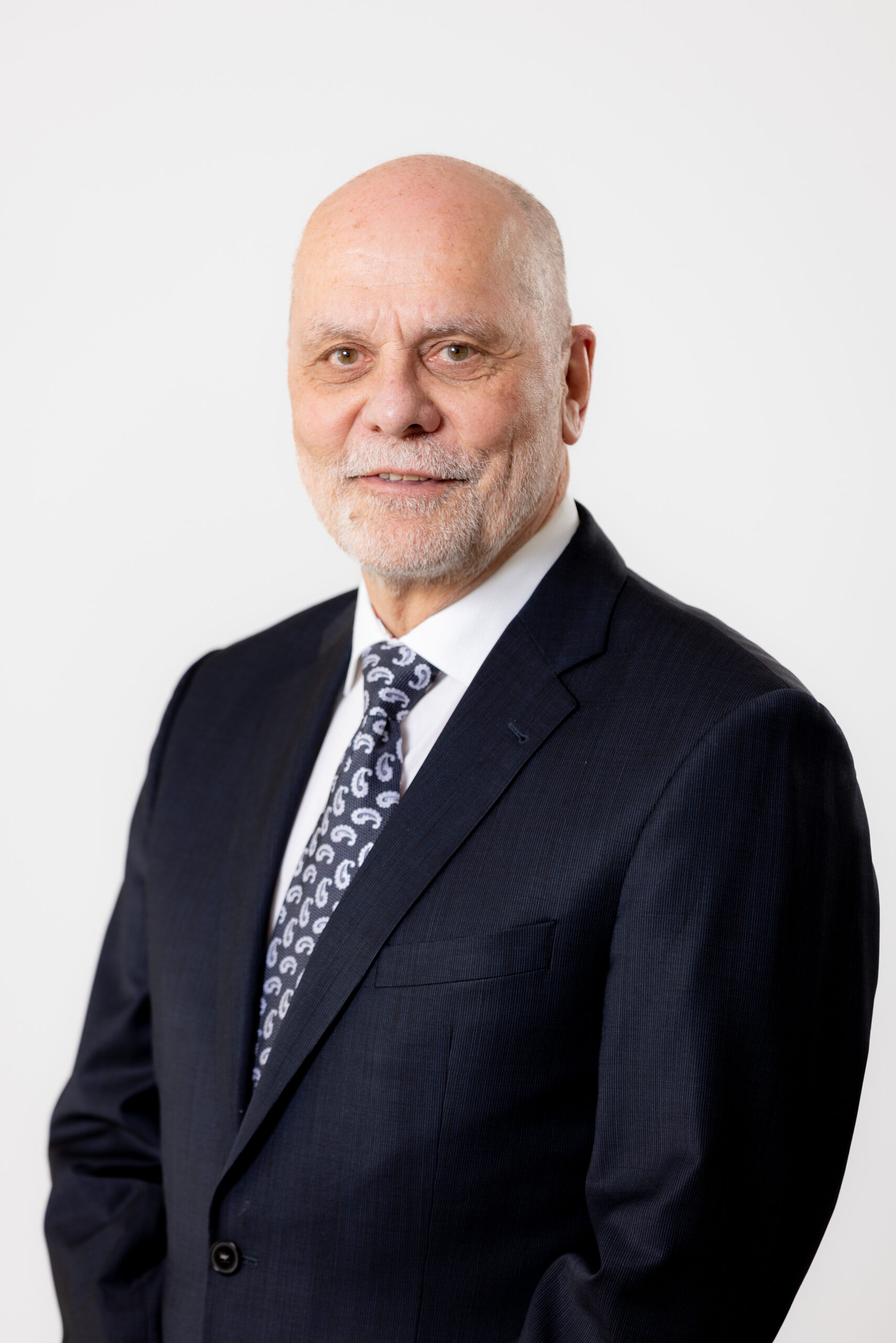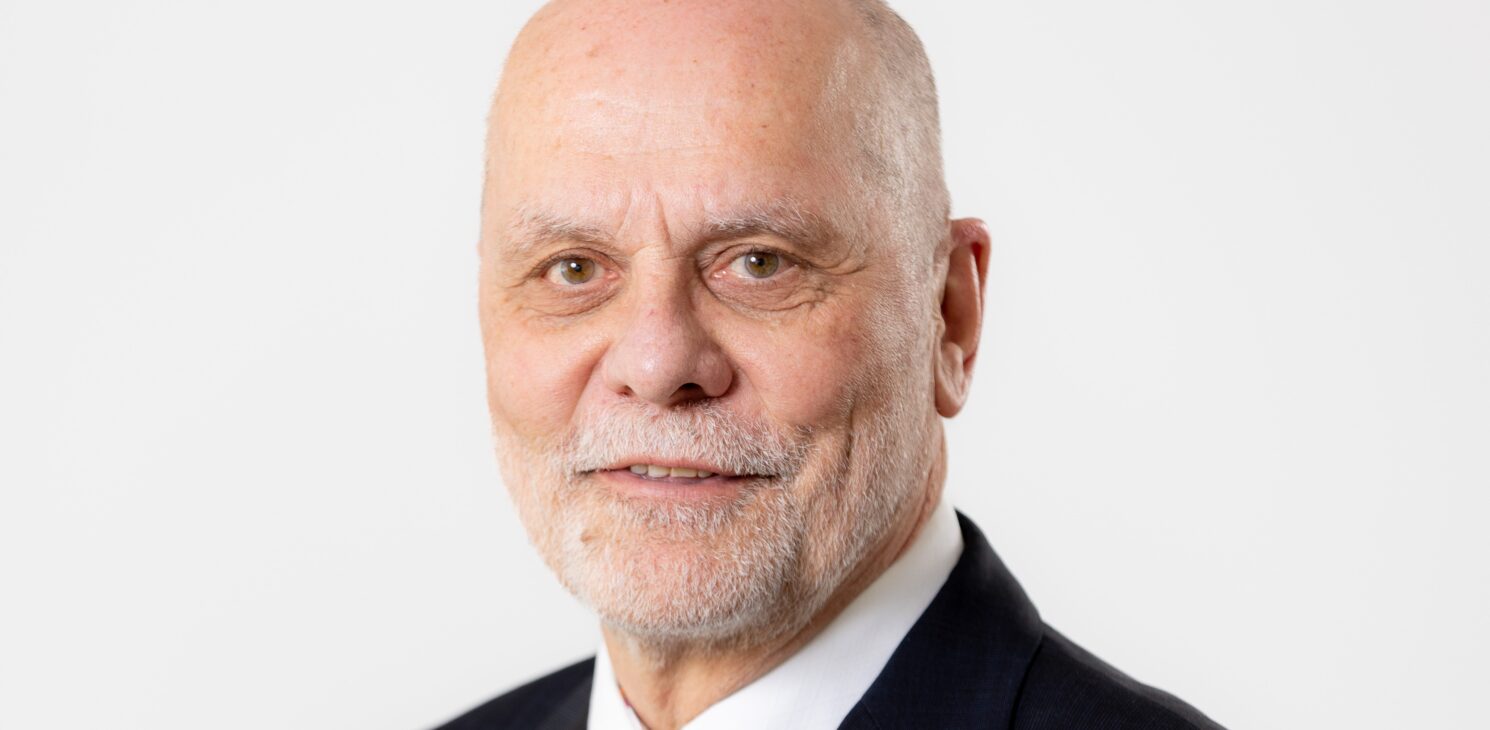Meet Gérald Lavoie, Eng.
CIMA+ is made up of talented professionals who are committed to the future of engineering. Gérald Lavoie is one of an exceptional group of mentors who are directly involved in the day-to-day training of the next generation of engineers. Thanks to his dedication and his immeasurable passion, scores of young engineers have been given an opportunity to develop and acquire the knowledge they need to secure their future in the transportation sector. He is a source of support and a fount of knowledge for all of his colleagues, and we encourage you to get to know him a little better. “Gérald has a big heart, and he is extremely generous. He believes in the upcoming generations and in youth. He has the gift of being able to transfer his knowledge and expertise to others.” Suzanne Demeules Eng., D.E.S.S.

You have carved out an enviable position for yourself in the transportation sector, and you support the members of the next generation by guiding them and acting as an exceptional mentor. What do you believe are the best qualities for a mentor?
Being available, knowing how to listen, being positive, valuing the individual, being thorough and being able to question yourself. Showing empathy in building a relationship of trust that allows all parties to express themselves freely and without judgment. It is also important to have a desire to share your knowledge and experience, all while being aware of your own limitations.
However, this type of exchange is not a one-way street. The other person must also demonstrate their interest and commitment.
What motivated you and led you to the career you have chosen?
I applied to Forest Engineering and Geodesy (Land Surveyor) at university, and I was accepted to both. A few weeks before courses were to begin, I contacted the Registrar’s Office at the university to ask if it was still possible to change my program to Civil Engineering, which I believed would offer me more career possibilities. My new choice was accepted. I’m not really sure what motivated the change, but looking back, I think it was a wise decision.
What are your greatest accomplishments in the transportation sector?
Even though I have been involved in and collaborated on many projects of varying sizes, the answer is undoubtedly the REM (Réseau express métropolitain) project, especially considering its importance and the impact it will have on the future development of public transit in the metropolitan region.
Another smaller project, the completion of Autoroute 25 between Montréal and Laval, was the first project executed in Public-Private Partnership (PPP) mode in Québec. At the time, I was in charge of engineering for the client (MTQ), and in addition to the engineering, there were legal and financial aspects to be considered in executing this type of project, which I found to be a great experience, thanks to the spirit of teamwork we created and the level of commitment among everyone in terms of ensuring the success of the project.
Which project for CIMA+ do you consider to have been the greatest challenge? Why and what did you learn?
Definitely the REM project, primarily due to the scope and complexity, the technical and environmental issues, the problems related to acquiring the land required for the project, the number of private and public stakeholders involved, the execution mode and the schedule.
More specifically, the first phase of the project, the objective of which was to prepare documents and obtain authorizations, agreements leading to the request for proposals for granting the contracts related to “Engineering, procurement and construction” and “The supply of rolling stock and related systems and equipment, operation and maintenance”. This phase of the project took place over a period of 11 months, and required the participation of a multidisciplinary team from CIMA+/Hatch and our subcontractors (more than 200 professionals) to produce all of the deliverables the client was expecting. Multiple sectors at CIMA+ contributed to attaining this objective within the context of the project.
What I have learned is that, regardless of the project, attaining the objectives that have been established by or agreed upon with the client relies primarily on the commitment, collaboration, technical expertise and personal qualities of the individuals involved in order to create synergy and a team spirit directed toward a common goal. In the case of the REM project, we were able to create this type of working environment.
What is the strength of CIMA+ in transportation?
Over the years, CIMA+ has developed and been able to provide solid expertise in the transportation sector, which enables us to handle all phases within the execution of a project, regardless of its scope, and to offer a superior-quality product to our clients., CIMA+ has also been able to develop an excellent level of collaboration and sharing among all services within the Transportation sector.
How do you see the future of transportation in Canada, and what would you like to see come to pass?
Within the current context of climate change, I believe that, above all, individual mobility comes down to implementing a structured and innovative transportation system that ensures the integration of various modes of transportation and allows for ecologically friendly and secure travel, based primarily on public transit and active transportation. In terms of road transportation, in principle, development and improvement projects must be limited and fully justified, and priority should be given to projects that ensure the maintenance and durability of assets. Of course, attaining this objective depends on a number of factors, including land-use management, which is why serious reflection related to this aspect is so important, and must involve all relevant stakeholders, with a view to proper adaptation to the reality of each region.
My wish would be that we are able to develop, once and for all, a global transportation plan with clear and precise objectives, and that we stick to it, rather than treating each file piecemeal, with no comprehensive vision.
What do you do to relax? How do you get your mind off work on the weekend?
I was a runner for almost 30 years, but walking and cycling are my preferred sports now. On weekends, I also like to read (especially fantasy and science fiction) and cook, which my wife appreciates, and I find it relaxing.
Where does your passion for engineering come from?
The switch really went off while I was working for MTQ, when I was involved in preparing opportunity studies and preliminary design studies, the goal of which was to identify problems related to transportation infrastructure assets and systems, to demonstrate the need for intervention and to propose the optimal solution that best fits current and future needs, taking into account the physical, economic and environmental constraints. This process involved dialogue and communication with multiple stakeholders, both inside and outside of MTQ, and required the use of imagination, judgment, a creative spirit and leadership to develop and defend the configurations that would improve the safety and functionality of the network. It was during this phase of my career that the light went on in my head and I developed my passion for and dedication to the transportation sector.
What advice would you give to a young person who is thinking about embarking on a career in engineering?
Once you enter the labour market, find something that interests you and that you can be passionate about, and don’t worry about changing sectors or departments, as the case may be. Keep an open mind, learn from your mistakes and be willing to question yourself, and don’t be afraid to consult and exchange ideas with your peers. Build a network. Take the time to really appreciate the environment in which you work, because in addition to the technical aspects, there are also people who will be drawn to you.
If possible, take advantage of passionate and committed individuals who are willing to offer their time, listen to you and pass on their expertise. I have benefited from this throughout my career. Above all, you must be motivated and interested in learning, always going the extra mile. Even if you have all the necessary talent and qualities, without motivation and commitment, you will stagnate.
What are your goals for your team?
Since 2013, I have not been present at the CIMA+ offices, but working out of a project office as part of a consortium with other suppliers. However, what I wish for those from CIMA+ whom I have worked with as part of the consortium, and for all the others, is to have an opportunity to be involved with other large-scale projects, to have an opportunity to be part of a team whose members are committed to collaboration, and to be able to question themselves and create a synergy that contributes to attaining their personal and professional goals.
People are more important than projects, because it is the people and the ties that unite them that make for successful projects.

Photo : Bonnallie Brodeur